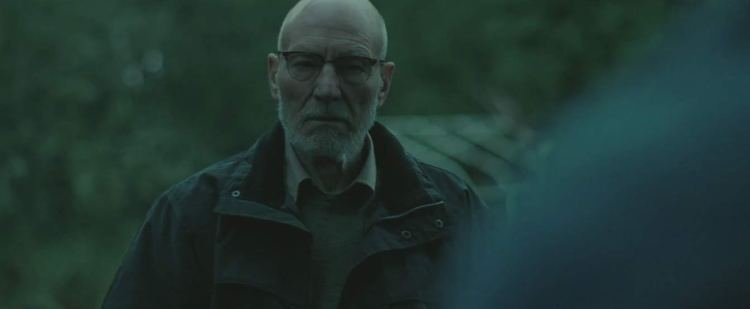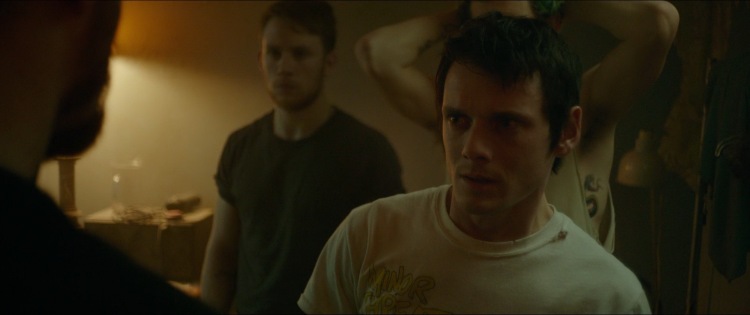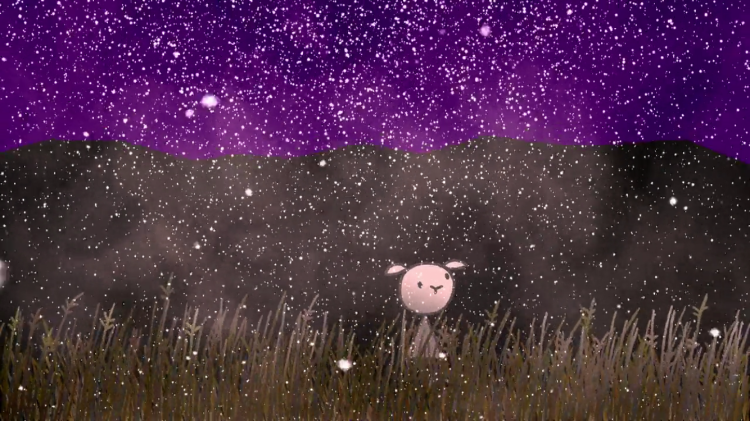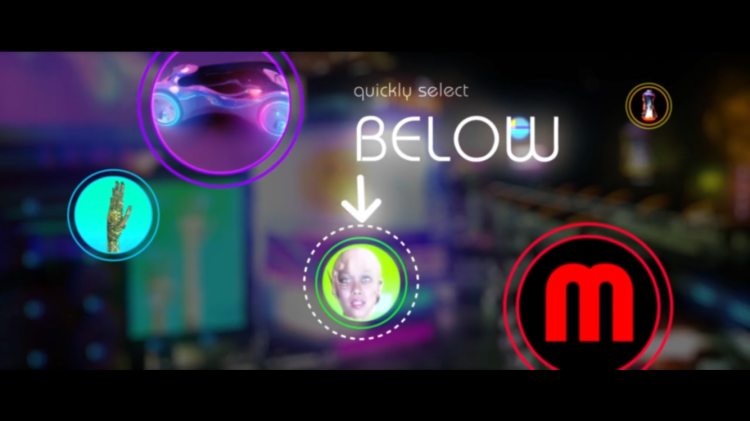
Overhype is the worst damn thing, especially when you do it to yourself for frankly no reason. And I think the worst thing I could have done for Jeremy Saulnier’s third feature Green Room is have seen his sophomore piece Blue Ruin and love it. And to have been attracted by the punk rock vibe of this movie. Because I ended up extremely underwhelmed by the movie in the end and a good portion of it comes from the fact that the aesthetical choices of both movies are almost completely indistinct from each other, save for color palette. Maybe later on in Saulnier’s career this could have been read as the establishing of a personal style, but when a director is this green – pun intended – and chooses to make no big shifts… it comes off as a refusal to grow as a filmmaker. In any case, I also think the storytelling and visual decisions both movies make suit Blue Ruin much much better.
That doesn’t mean we don’t have a still pretty entertaining thriller on our hands, but we don’t get much more meaty beyond it – unless you are a punk rock fan yourself, in which case there’s an underlying commentary about the “true believers” and skinhead movement that I enjoyed catching. But the average viewer probably can’t tell Bad Brains from Minor Threat and so I don’t think this is the place to divide that.
Instead, let us take Green Room‘s plot for what it is: The Ain’t Rights, a way-too-off-the-grid punk rock band from D.C.made up of bassist Pat (Anton Yelchin), guitarist Sam (Alia Shawkat), drummer Reece (Joe Cole), and vocalist Tiger (Callum Turner) that is finding their tour into the Pacific Northwest turning into quite a bust. When they get a tip on a spot in a club just outside of Portland, they make it out and find themselves given a cold welcome in a Nazi skinhead bar (they don’t exactly help things by opening with a certain Dead Kennedys number). After their show, Pat quickly goes to the green room to pick up Sam’s phone and happens upon the aftermath of a murder, with one other terrified witness Amber (Imogen Poots) asking Pat to call the police.

Pat’s attempt to escape and get help fails and, in short order, the band and Amber become trapped with the people behind the murder of Amber’s friend ready to do whatever it takes to get them outside and within range of their machete blades or pitbull jaws. The group has to figure out a way to escape alive and hope they make it out at the end of the night.
Relatively simple premise and structure, we’re looking at a sort of Assault on Precinct 13 type of scenario. The story is centered on two gambits that are admirable in their own way separately. But together is another thing unfortunately. What those two gambits essentially are is that the movie is not to waste any time attempting to shape the characters more than the body count they potentially are. We get maybe hints of inner life – some a bit clumsier than others, like us being told Callum knows jujitsu – but the majority of the 95 minutes are dedicated to the situation they are in. The only character function we get is quickly recognizing Pat as our de facto protagonist, not only because Yelchin is the most recognizable star of the film other than Patrick Stewart, but because the brunt of the shit that happens happens strictly to him.
So there’s that, which lends the horror film atmosphere that the film has been constantly praised for. In a slasher, we don’t know the meat very well, we just know they’re gonna die soon. And this movie is eager to shoot for just a touch of that dire certainty of death from the very moment we get the first (non-fatal) incident to one of the band members, a moment of shocking use of off-screen space to invite the audience to wince at what they’re expecting on the other side of the door before introducing a very grisly piece of sloppy makeup work that will linger in a viewer’s mind for a long while, aided by the performance of the actor suffering. It is an unfortunate shame that almost immediately after this scene, the severity of the injury never once affects the capability of the character to perform certain acts (especially when he is later on struggling to overpower a man with a gun and should not be able to put up as well a fight as he is).
Anyway, the secondary gambit that doesn’t mix well with the first is something by no means new to Saulnier as a storyteller, nor is he at all ill-equipped to use.

Nobody in this film knows what they’re doing. It’s a very fundamental part of this movie – not only is the band clueless on how to handle the situation, the skinheads and their own authoritative owner of the club Darcy (Stewart) are merely trying to organize themselves in the wake of this mess only to find it hard to keep a hold on a group of scared kids. The idea that people are seeing red but don’t know how to control is once again something Saulnier went through with Blue Ruin and used to much much better effect, especially when you have a dopey looking actor like Macon Blair who is so great at looking down on his luck and kicked around as the lead like in the former film. Here, he’s still that dopey leftover, but he’s just an afterthought.
Anyway, having a cast of characters being absolute screw-ups in every sense (and finding themselves mutilated and killed horrifically for it) is easily writable as human flaws, but not when the movie spends little time allowing us to see how human these characters are, and therein lies Green Room‘s inability to be anything more than a watchable thriller (a very breezy one, though, the movie really rides through the escalation without losing the fatigue of these people being stuck in the club for at least 12 hours). The actors try their best, of course, to give the illusion of depth, but the Nazis themselves are indistinguishable from one another except that one is Patrick Stewart (probably the most overhyped element of the movie – Stewart’s performance is inconsequential whatsoever to the film and while he does paternal illusion and quiet calculation well, it is by no means a performance anybody else would not have been able to deliver), one is Macon Blair, we find out the true affiliation behind one quickly, and Werm (Brent Werzner) – the man who commit the very deed that set this whole thing in motion, killing his girlfriend – is easily my favorite performance in the whole movie despite being one-note. He spends his entire short appearance embodying unrestrained hate to everything he sees and only exits the film after practically eye-fucking Yelchin relentlessly while he describes how he killed his girlfriend. It’s intense in all the right ways without anything happening to the leads and probably the closest the movie gets to horror territory without the pitbulls being involved (another juicy bit of frighteningly blue-lit makeup work comes with the first pitbull appearance).

The trapped themselves, I’ll never call any of their performances bad, but Poots’ Amber is the only character with some real life behind her by becoming a resigned center of cynicism, certain that every single one of them will die. Yelchin gets the whole movie to himself and carries it well, but… well, like I said, they’re all meat for the slaughter. They don’t phone it in, but they’re nothing to write home about.
I know I already mentioned how I feel the aesthetic is virtually similar to Blue Ruin in every way, but I should at least elaborate before I call this review done. Brothers Will and Brooke Blair (also related to Macon) return as composers to provide a blanket of ambient tones that give the early tour scenes a dreamlike quality and get lower to turn things into a nightmare, much like they did in the previous film. Saulnier stepped away from the cinematography role he took on with the former film, but clearly held onto making sure Sean Porter did everything just as lo-fi indie as he did and lit even indoor scenes to feel asphyxiatingly foggy at times. And none of this is necessarily bad, since we still have a sense of location grounding about (I feel I could map out the club by memory now), but if Saulnier’s next film certainly doesn’t show him moving higher on the learning curve, I’m gonna start thinking he’s a one trick pony.
It’s certainly an enjoyable trick, an amusing one, but not anywhere near well-tuned (one more gripe: the movie mishandles itself by having one of its ending notes humanize one of the Nazis… even the dog lover in me was kind of like “this is tasteless as fuck, they just finished a massacre”) or perfect. And one note is still one note.
You can’t play a punk rock show with just one note.


























